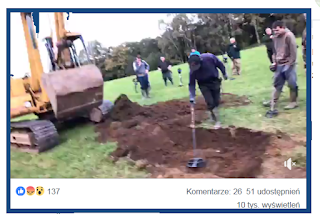
There is some more plugging of the book on the Al-Yahudu tablets published by Brill last year (fortunately open-access) Alstola, Tero. 2020.
Judeans in Babylonia: A Study of Deportees in the Sixth and Fifth Centuries BCE. Culture and History of the Ancient Near East 109. Leiden: Brill.It seems that the plug (
Did They Weep? A New Book on Judeans in Babylonia) was written by the author himself.
In his new book Judeans in Babylonia, Tero Alstola studies Judean deportees in Babylonia in the sixth and fifth centuries BCE. Using cuneiform texts as his sources, Tero Alstola explores the life of deportees and their descendants in Babylonia over several generations, focusing on the questions of socioeconomic status, culture, and integration into Babylonian society.[...] Although quite some relevant texts have been available for a long time, the recent publication of cuneiform tablets from the village of Yahudu has significantly increased the number of Babylonian sources pertaining to Judeans [...] the life of deportees 2,500 years ago can be studied in great detail. The majority of Judeans and other deportees were settled in the Babylonian countryside and given a plot of royal land to cultivate. In exchange, they had to pay taxes and perform work and military service. [...] The practice of settling deportees in village communities according to their place of origin helped migrants to preserve their traditional culture in the countryside. Judean farmers had little interaction with the native population whereas the deportees living in cities met Babylonians on a regular basis. As a result, Judean farmers were less integrated into Babylonian society than their fellow deportees living in cities.
So rather like Jews (Ashkenazi and in particular Hasidic Jews) settled in central Europe in the 18th-19th centuries, where the documentary evidence is much more informative and holistic.
In the book itself, I
noted that Dr Alstola seems pretty unfazed by admitting blithely: (
p 102)
... "The tablets are of unprovenanced origin
and they have found their way into several private collections, including those of Moussaieff, Schøyen, and Sofer"
Ouch.
"found their way"? Coy, but uninformative about the true nature of some of material the author is working with. Admittedly he does attempt a rather broad-brush explanation in the four-page chapter "Ethics and Unprovenanced Artefacts", pp. 39-43.
That however misses the point that it is not lack of "
provenance" that is the problem, but clandestinely dug-up and surfacing on the no-questions-asked antiquities market that was the motor for the digging. The motor for the looting is that old lumps of clay
have a monetary value because
collectors buy them (active, not passive, the artefacts were bought and did not themselves "find their way" to a so-called "good home"). There is no place for coyness here. When talking about the antiquities trade and collection-driven exploitation why can't academics call a spade a spade? Is it so difficult?
To make matters worse, it seems the researcher is siding with those looter-collectors when he alleges that in a time of civil collapse and war:
"the failure of the Iraqi and Syrian states to protect their cultural heritage [...] states
have not been able or willing to enforce the statutes of the convention [eh? what?*] to their full extent"
Wow. It's easy to say such things in Helsinki, yes? Syria and Iraq, looting is their fault and it is the collectors who are the real heroes, saving it from them? The rape of the past can be condoned, if a scholar can be induced to make something of the looted items, legitimising the whole process? That's like the rapist claiming in defence that the date-rape-drugged victim was to blame because she did not put up much of a fight, and anyway, he could have killed her but didn't. You'll forgive me for saying that the author, who obviously passionately wants to do things with these cunies, seems to have lost the idea of "ethical research" here. He adds:
"As the tablets have already been removed from their archaeological context and the damage cannot be undone, there is no reason to leave them unpublished" [...] "the academic community has a responsibility to preserve this [sic] data for future generations"..
Really? There is a very good reason, to take the already unpleasant analogy further, that's like saying if you find a half-naked date-rape-drugged victim behind a wheelie bin "as she's quite attractive, and already been raped before and the damage cannot be undone, there is no reason for me not to rape her too". I think somebody coming across a rape victim in fact has very different responsibilities than take advantage of a situation in his own interests. Though a drastic parallel, put in those terms, the fallacy of the scholar's analogous argument is pretty starkly visible, isn't it?
In this context of research collaboration with collectors and shoulder-shrugging legitimising looting, it is worth noting that Helsinki is also the home of the EPFRN, collaborating with artefact hunters engaged in Collection-Driven Exploitation (dismantling) of the archaeological record, which in the Middle Eastern context would rightly be called 'looting' . Helsinki, the 'lootier' side of archaeology?
*International conventions do not have "statutes".









































